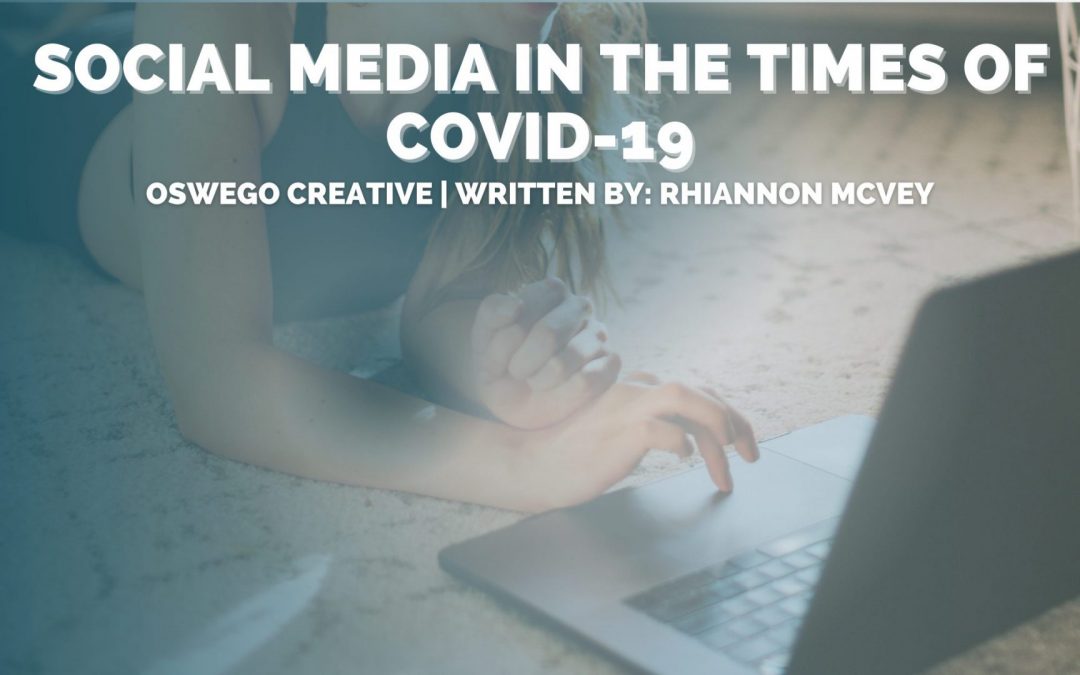How’s everyone doing? How are we feeling? I know that the past few weeks have been heavy. And confusing. And scary and uncomfortable and there are still a lot of unknowns weighing over our minds and hearts. I actually woke up a few days ago thinking that this was all just a really bad and crazy dream, a direct result of me eating way too much spicy Kung Pao Chicken right before I went to bed. And then I woke up and realized the really bad and crazy was in fact, very real.
The coronavirus, or COVID-19 as you may have heard it called, has forced our collective society into a new normal. The things that made up the fabric of our lives – going out to restaurants, bars, spending time with the people that matter most, even a simple thing like having the ability to go into work – have been put on an indefinite pause. In a time when digital connection is so very important, when it’s the only thing we have, many people are turning to social media and other digital outlets to stay informed, to stay social, to stay connected.
The use of social media can be a valuable tool in these times of crisis for first responders, government officials, businesses, affected communities and beyond. Below are three ways social media can play a beneficial role before, during and after times of tragedy and trauma, as well as what we need to be made aware of in order to use it responsibly.
- Broadcasting critical information:
Social media’s communication platforms can provide announcements to help with preparation for impending events and provide warning, response, recovery and educational updates. A benefit of using social media for providing and receiving information is that the content can be communicated in real time and broadcasted to a wide audience quickly and easily. Social media is often used as the fastest way to inform others, such as family and loved ones, about safety status, needing help or relaying critical messages and updates. This can help decrease fear and worry, as well as empower affected individuals, communities and the public with a feeling of control amidst a situation that is often chaotic and overwhelming.
- Promoting resiliency:
An important factor that creates and strengthens resiliency and the ability to recover and come back from distressing events and experiences is connection to others. A sense of belonging and community can be facilitated through social media and let individuals know they are not alone, they have support and there is an outlet for coping. Social media can also be vital for sustaining ongoing connection in the aftermath of trauma and loss through our personal or group networks, creating digital spaces for sharing virtual memorials, memories, images and story telling.
Over the last few weeks, I’ve personally seen an overwhelming amount of positivity, support and encouragement via social media. Stories of hope, of kindness, of truly good and wonderful people doing truly good and wonderful things for their fellow community members. I’ve also seen technology step up and create ways for people to have some semblance of normalcy. A great example of this is Netflix’s feature that allows people to effectively have movie nights with their friends/family while still practicing social distancing. We will get through this thing together, even if we have to do it (mostly) apart. Technology and social media have helped to make this possible.
- Access to resources:
Sites in the form of social media networks, blogs and websites offer a way to obtain and exchange information and resources in times of emergency, crisis, or disaster. Some examples of tools online include:
- Facebook Crisis Response: With this response tool, you can mark yourself safe when an emergency takes place in your area, and those you are connected to on Facebook will be notified. You can also use this tool to find or give assistance and receive information during and after a crisis at https://www.facebook.com/about/crisisresponse.
- Centers for Disease Control (CDC) and Prevention Twitter Alerts: The CDC’s Center for Preparedness and Response provides crisis or emergency updates at https://twitter.com/CDCemergency/alerts.
- Disaster Distress Helpline: Provides readiness preparation information, education and coping strategies on Facebook (https://www.facebook.com/distresshelpline),Twitter (@distressline) and text messaging (text TalkWithUs or Hablanos to 66746).
- The Red Cross Safe and Well Database: Register yourself or search for others as a way to communicate safety when disaster happens at https://safeandwell.communityos.org/cms/index.php.
A note of real caution with using social media, of course, is that misinformation can spread quickly and widely, so it is important to be mindful of where you obtain your information online. We all saw this when news of COVID-19 first became apparent. There was a lot of misinformation, a lot of rumors, a lot of confusion when it came to what was fact vs. fiction. Another challenge of social media is individual opinion can be interpreted, reported or shared as fact. This confusion can cause additional uncertainty, heightened arousal and response in the face of critical situations. Filtering your social media exposure by using the tools suggested above can help navigate and manage these risks.
It is also valuable to be aware of privacy, security and safety issues, such as disclosing personal or location information that could put you at risk on social media, especially in moments of crisis or great need. And finally, an important consideration that has been addressed in previous blogs and content is to mindfully manage and monitor social media exposure and content that can become a source of traumatization.
Social media can certainly be a lifeline in critical times, and I believe the benefits (and challenges) to bring assistance and resources to others prior, throughout and following an event like the COVID-19 outbreak are worth the community at large becoming at least a little bit familiar with our digitally connected world.
How has social media impacted your outlook on the COVID-19 crisis? Have you had a mostly positive or negative experience with it? We want to know! Share your thoughts with us in the comments below.
Stay safe, and stay healthy friends.

